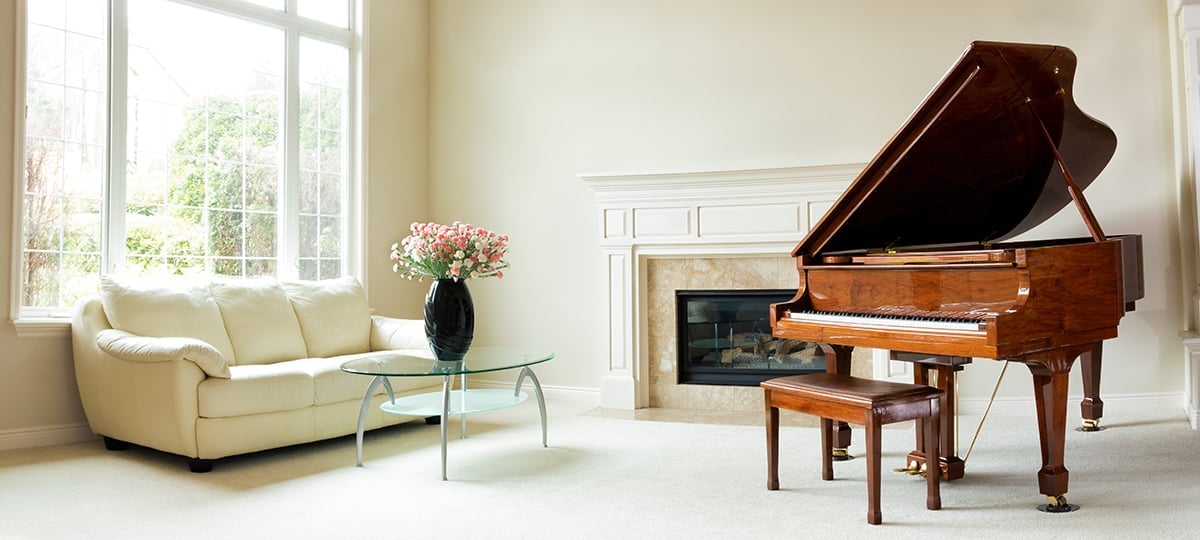
Most piano practice tips have to do with what you practice, but have you ever thought about where you practice?
Our spaces have a big effect on our moods and how productive we are. So when it comes to practicing piano, you want a welcoming, cozy space that beckons you to sit down and practice.
We’re writing this in October, when temperatures are dropping and people are staying in. It’s the perfect time of year to fall back in love with the piano (see what I did there?!) and create a cozy practice space.
Here are some piano practice-space tips to get you started.
*Note: This article contains affiliate links, which means we might earn a small commission from the product seller if you make a purchase. For more info, check out our privacy page.
If it’s possible, try to find a private space to practice. You’ll focus better if you’re not distracted. And if no one can hear you, you’ll feel more comfortable taking risks and making mistakes.
Mistakes are an important part of learning. You won’t improve unless you fail on occasion! But it can be difficult to make mistakes and sound “bad” when the piano is in the middle of the living room.
Acoustic pianos are difficult to move, but if you can afford one, consider placing a second digital piano in your bedroom. Digital pianos often come with headphone jacks so you can practice in 100% privacy. Even a small, affordable one can make a difference by providing you a safe space to test out arrangements or practice a particularly tricky passage.
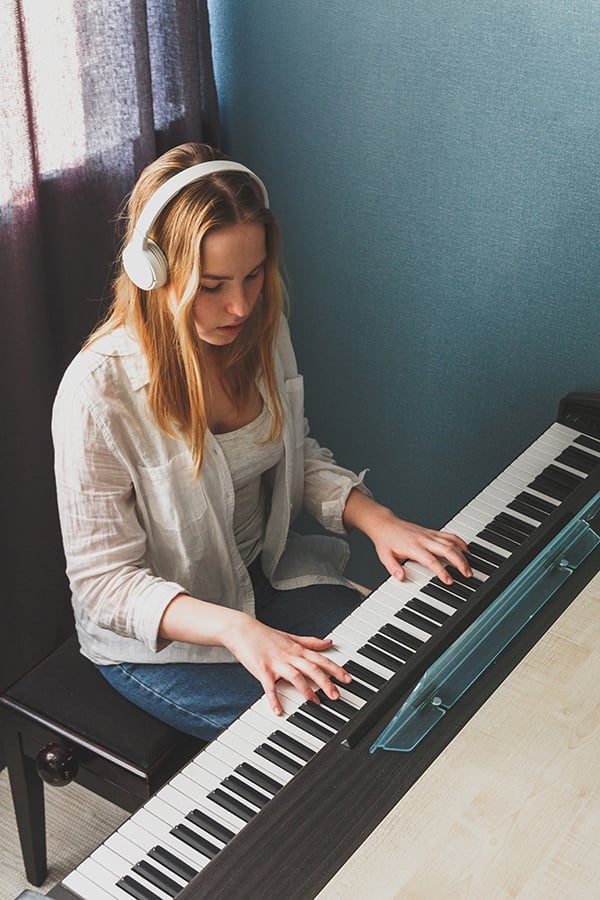
Complex sheet music can be very detailed and hard to read, not unlike dense text. If you invest in good lighting to read books, why not invest in good lighting to read music too?

Bad lighting is annoying and uncomfortable, so don’t let it get in the way of your practicing. If your space’s lighting is lacking, there are specially designed piano lamps to help illuminate your sheet music.
You can find lamps that clip on to music stands or keyboards. Or use a sturdy lamp designed to be placed on top of an acoustic piano.
Store your sheet music neatly in a binder and print it in a way that makes sense. For example, you can tape single-sided pieces of sheet music together so you can fold and unfold them on the music stand, eliminating the need to turn pages constantly.
Reading sheet music off an iPad saves paper and can be useful when you’re testing out sheet music on the web, but it’s almost always more comfortable to read printed sheet music. Paper is easier to write on, easier to read, and allows for more accurate page-turning.
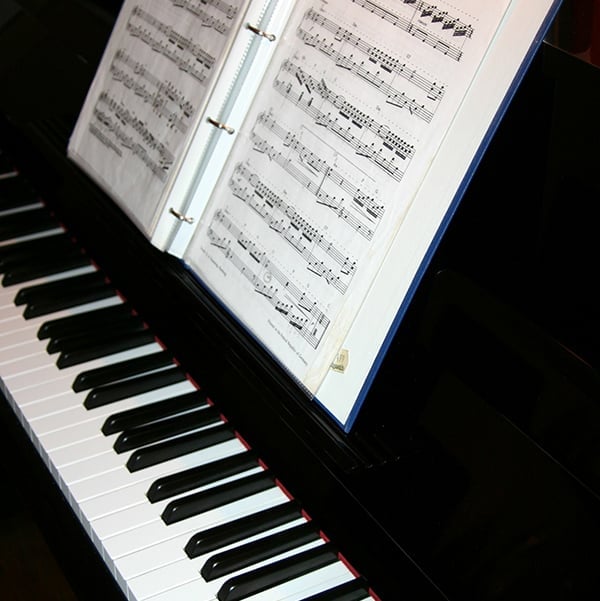
You wouldn’t sit on a hard wooden stool and do computer work for hours. Likewise, you want to be as comfortable as possible so you can practice as much as possible.

There are several different types of piano benches. The best piano benches often have soft leather tops and a storage space under the seat.
We strongly recommend getting an adjustable seat. Pianists come in all shapes and sizes, and you want a seat that’s suited to your height. Avoid chairs with armrests — you want maximum freedom of movement!
Make sure that when you sit down, your forearms are parallel to the ground. If you feel strain from practicing, check out our talk with a chiropractor for more posture tips.
If you use a digital piano, consider investing in a pair of high-quality headphones to maximize your practice experience. Beautiful sound can motivate you to play more.
Buying headphones can be an intimidating experience because of the sheer amount of choice out there. We recommend looking for headphones designed for music production and keyboards. It also helps to learn some key terms:
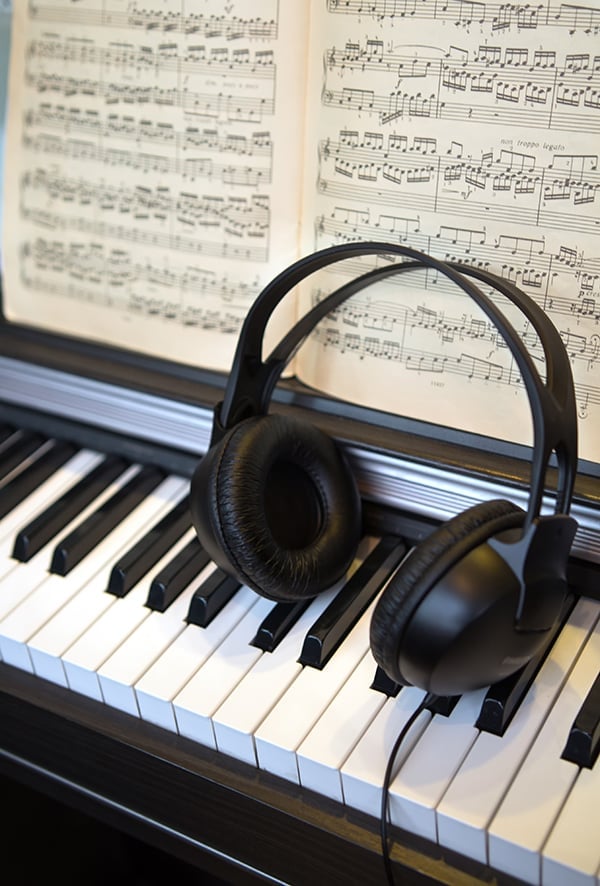
Make your practice space uniquely yours. If you like to snack while you practice, make sure there are snacks and water nearby. If you work better among certain colors, decorate your space with inspiring art of those shades.
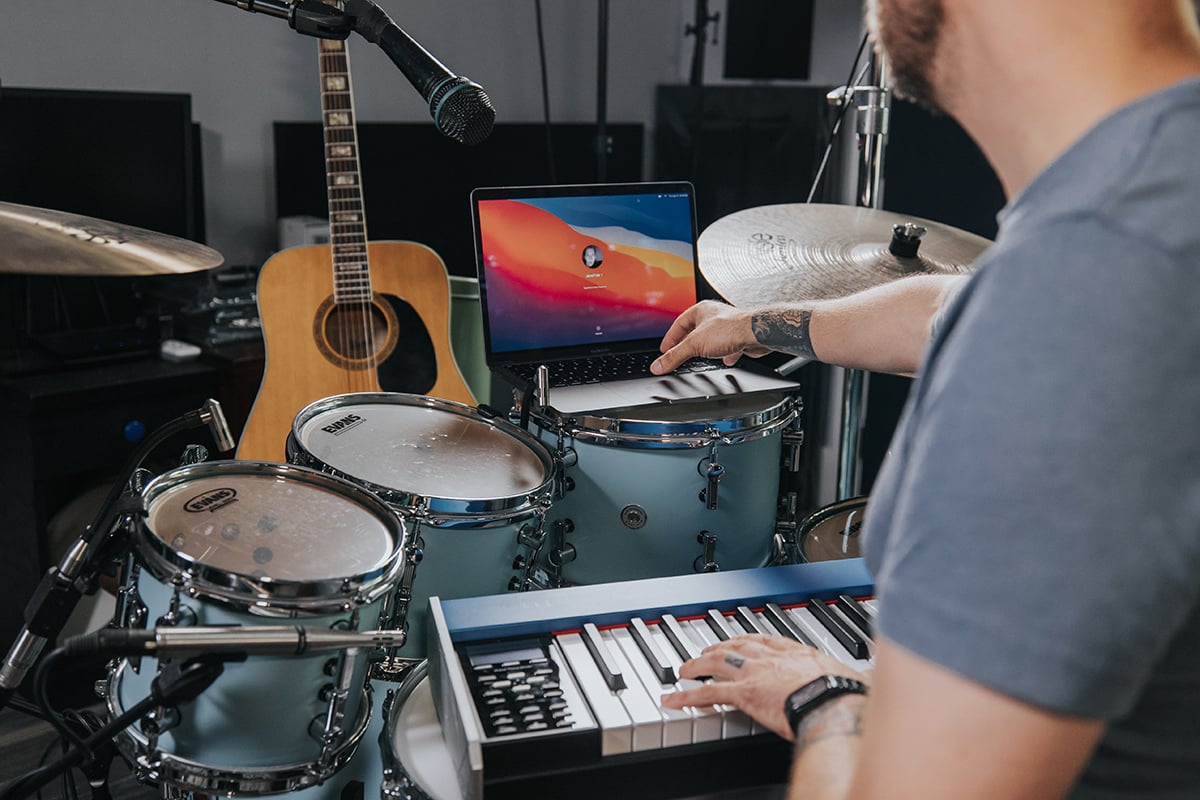
When you practice, you want to get into an awesome state of flow. So, limit the need to have to get up and grab stuff. Have everything you need close by you, including sheet music, cables, your computer, headphones, stationery, or whatever you may need. Designate tools just for piano.
🧠🎹 FOOD FOR THOUGHT: “Flow” is a psychological phenomenon coined by Mihály Csíkszentmihályi. It describes a state where you’re totally focused on what you’re doing and time flies. It’s often experienced by those in creative fields, and it is a very enjoyable state of mind.
The best way to experience flow is to do something you find rewarding, that is challenging but attainable, and that provides immediate feedback. Practicing piano can fulfill these requirements!
Work at a computer all day? The last thing you want is to come home and strain your eyes more at the piano!
To prevent eye strain, make sure you have good lighting (see tip #1) and that your sheet music is level with your eyes. An adjustable music stand and/or an adjustable keyboard stand should help with this.
And if you feel tired after practicing for a while, remember: it’s okay to take a break! Get up, stretch, drink some water, and look at something farther away.
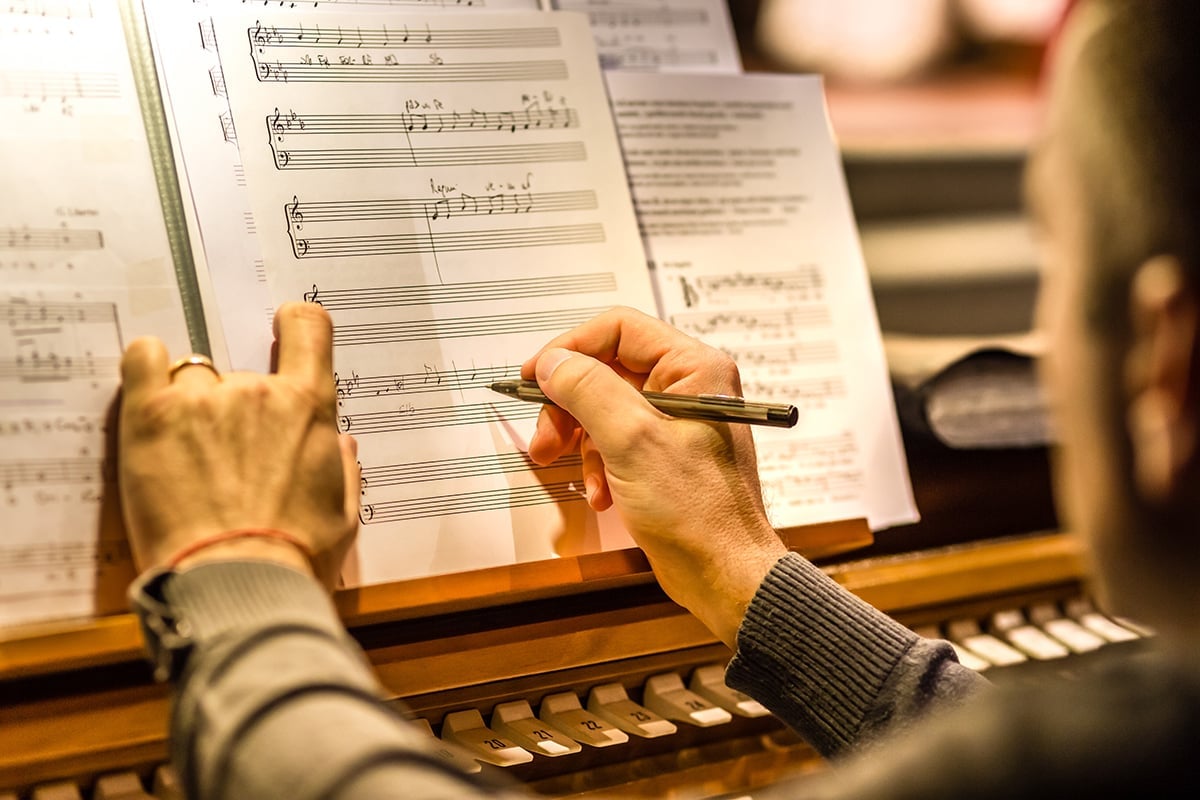
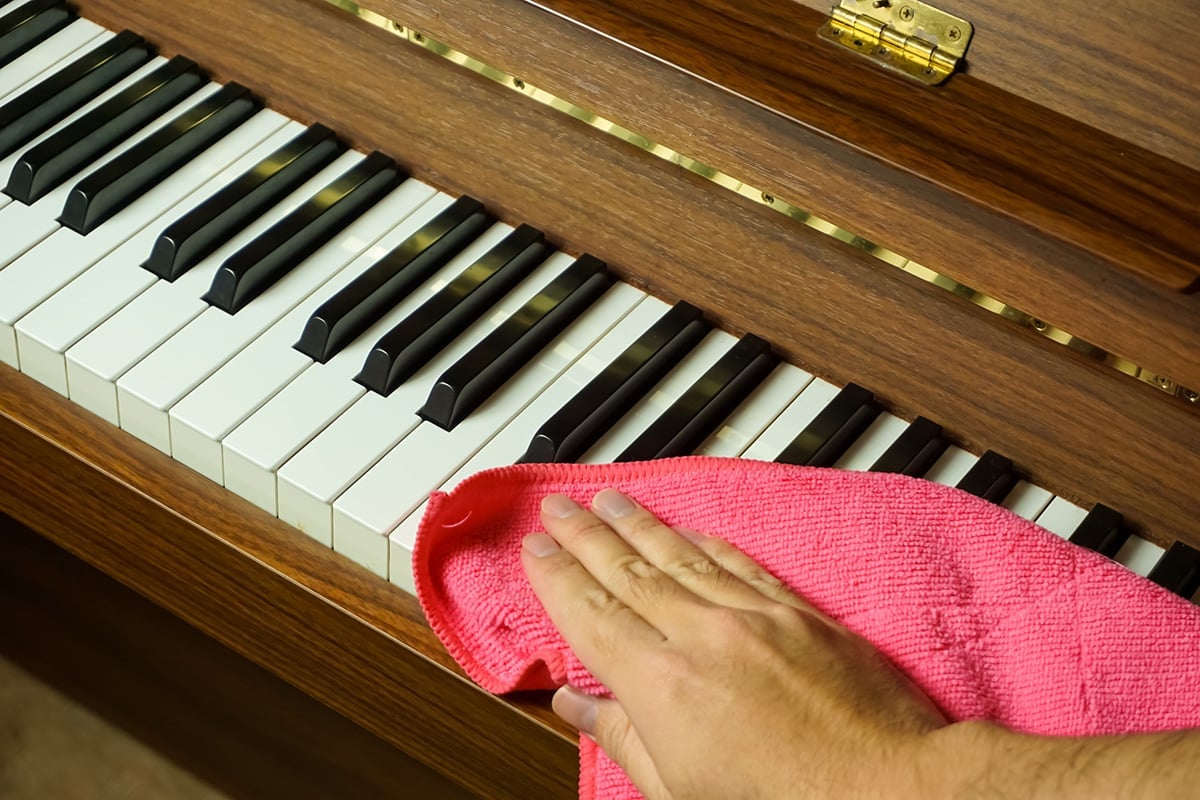
Finally, you want to place your fingers on something nice, not something dusty or dirty. A dust cover can help with protecting keyboards.
Fortunately, digital pianos are very low-maintenance. A simple occasional dusting is all you need. If you have an acoustic piano, try to get it tuned twice a year or every six months depending on your humidity level. Otherwise, gently wiping your acoustic piano with a microfibre cloth should do the trick.
Figuring out what and how to practice can be tougher than practicing itself! If you want to get the most out of your practice routine, check out some of our other piano practice tips:
Happy practicing!
Charmaine Li is a Vancouver writer who has played piano for over 20 years. She holds an Associate diploma (ARCT) from the Royal Conservatory of Music and loves writing about the ways in which music—and music learning—affects the human experience. Charmaine manages The Note. Learn more about Charmaine here.
/marketing/pianote/promos/april/banner-bg-m.webp)
We use cookies for traffic data and advertising. Cookie Policy »
/marketing/pianote/promos/april/banner-title.webp)